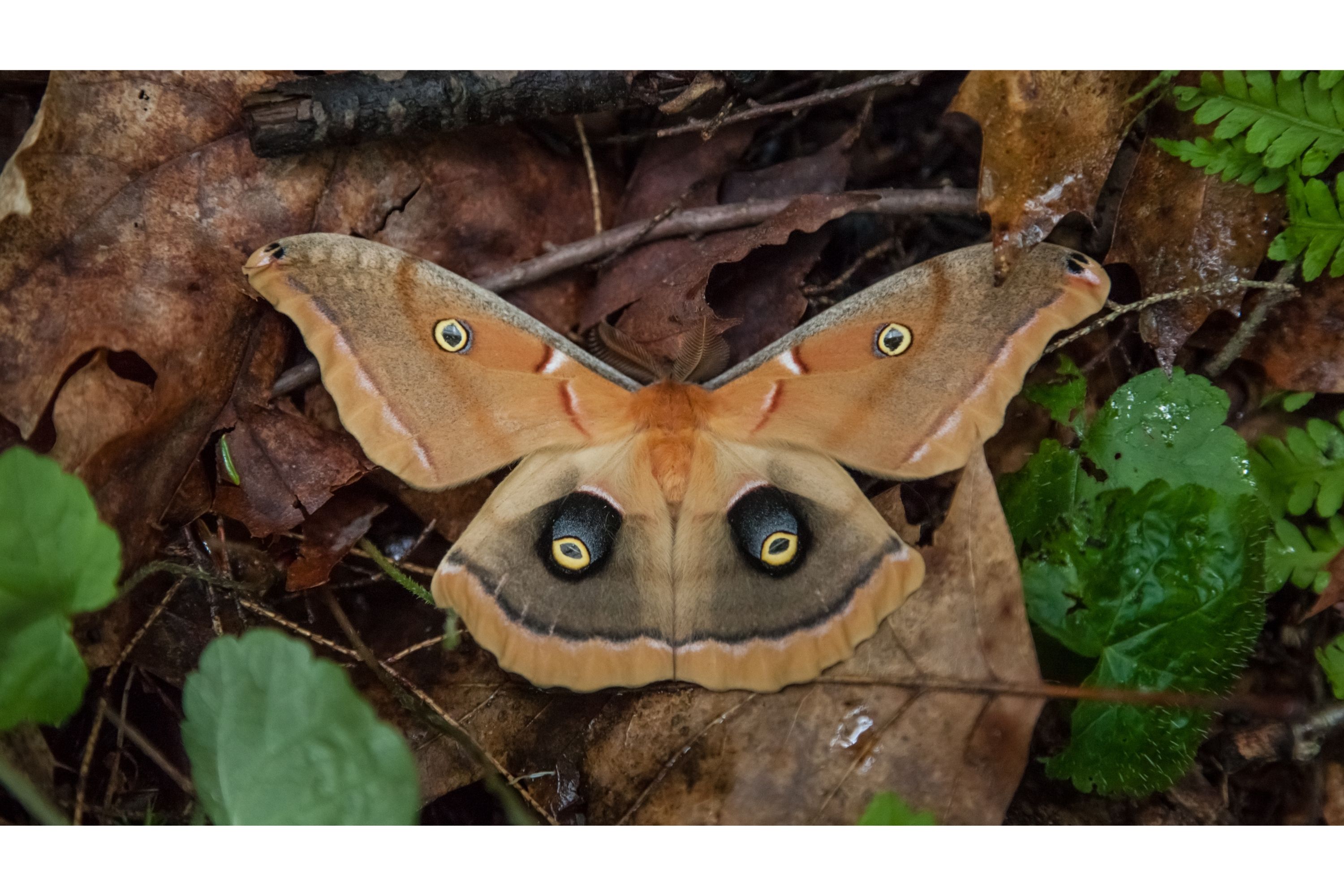Polyphemus moth
(Antheraea polyphemus)

Description
Antheraea polyphemus, the Polyphemus moth, is a North American member of the family Saturniidae, the giant silk moths. It is a tan-colored moth, with an average wingspan of 15 cm (6 in). The most notable feature of the moth is its large, purplish eyespots on its two hindwings. The eyespots give it its name – from the Greek myth of the cyclops Polyphemus. The species was first described by Pieter Cramer in 1776. The species is widespread in continental North America, with local populations found throughout subarctic Canada and the United States. The caterpillar can eat 86,000 times its weight at emergence in a little less than two months. The life cycle of the moth is much like that of any other Saturniidae species. It lays flat, light-brown eggs on the leaves of a number of host trees, preferring Ulmus americana (American elm), Betula (birch), Salix (willow), but also, more rarely, can survive on other trees, including: Quercus (oak), Acer (maple), Carya (hickory), Fagus (beech), Gleditsia triacanthos (honey locust), Juglans (walnut), Pyrus (pear and quince), Prunus (plum, peach, apricot, cherry, etc.), Sassafras, and Citrus. When the eggs hatch, small yellow caterpillars emerge. As the caterpillars age, they molt five times (the fifth being into a pupa). Each instar is slightly different, but on their fifth and final instar, they become bright green with silver spots on their sides. They feed heavily on their host plant and can grow up to 3–4 inches long. They then spin cocoons of brown silk, usually wrapped in leaves of the host plant. Two broods generally hatch each year throughout the United States, one in early spring and one in late summer. The moths close and then must pump their wings with fluid (hemolymph) to extend them. The females emit pheromones, which the male can detect through his large, plumose (feathery) antennae. Males can fly for miles to reach a female. After the moths mate, the female spends the majority of the remainder of her life laying eggs, while the male may mate several more times. Adults of this family of moths have vestigial mouths, meaning their mouth parts have been reduced. Because of this, they do not eat and only live as adults for less than one week. In captivity, this moth is much more difficult to breed than other American saturniids such as Hyalophora cecropia, Callosamia promethea, or Actias luna. Kept in a cage, the male and female tend to ignore each other, unless a food plant is present.
Taxonomic tree:







